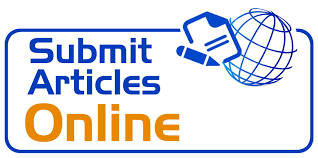Studi Bibliometrik Topik Riset Task Technology Fit dalam Menunjang Kinerja
DOI:
https://doi.org/10.15575/jbpd.v5i4.31319Abstract
Task technology fit is a phase where the employee's needs through a long-term career are in accordance with the actual results experienced during work. The aim of this research is (1) to analyze the development of task technology fit and performance research in the last 10 years which has been carried out (2) to analyze the theoretical and empirical contributions provided by task technology fit and performance research. (3) recommending areas for further research. This research was carried out by searching through the Scopus database from Publish or Perish /PoP. The search produced 29 journal articles related to the topic to be discussed. The second stage is to verify the articles collected. During verification, 20 articles were selected and deemed appropriate to the research topic, then this number was narrowed down again and 20 articles remained that were truly relevant to the topic to be discussed in this research. The results of the analysis show that the dominant themes discussed by previous research are related to the themes. The dominant themes discussed by previous research are related to the themes of health service clusters, technology acceptance, academic performance, e-learning, banking services, and TTF results. The theoretical contribution provided by research on task technology fit is related to performance, showing that task technology fit really supports the performance of both employee performance in the organization and consumer performance in using technology. Further research is also needed to identify relevant constructs and indicators that can be used to determine the performance and integration of TTF with other technology use frameworks such as TAM. TTF testing also needs to be carried out in organizational contexts where technology is not used mandatory and focuses on less educated and older workers, because they are generally difficult to be impacted by technological changes.
References
Anaama, E. A. (2022). Integrating Delone and Mclean and Task Technology Fit Models to Evaluate the Influence of E-CRM on Individual Performance. Journal of Logistics, Informatics and Service Science, 9(3), 226–242. https://doi.org/10.33168/LISS.2022.0316
Arruda, H., Silva, E. R., Lessa, M., Proença Jr., D., & Bartholo, R. (2022). VOSviewer and Bibliometrix. Journal of the Medical Library Association, 110(3), 392–395. https://doi.org/10.5195/jmla.2022.1434
Awad, H. A. H. (2020). Investigating employee performance impact with integration of task technology fit and technology acceptance model: The moderating role of self-efficacy. International Journal of Business Excellence, 21(2), 231–249. https://doi.org/10.1504/IJBEX.2020.107594
Chen, W. (2022). Extending the Task-Technology Fit Model in an E-Collaborative English Learning Context. International Journal of E-Collaboration, 18(1). https://doi.org/10.4018/IJeC.305233
Donthu, N., Kumar, S., Mukherjee, D., Pandey, N., & Lim, W. M. (2021). How to conduct a bibliometric analysis: An overview and guidelines. Journal of Business Research, 133, 285–296. https://doi.org/10.1016/j.jbusres.2021.04.070
Donthu, N., Kumar, S., & Pattnaik, D. (2020). Forty-five years of Journal of Business Research: A bibliometric analysis. Journal of Business Research, 109, 1–14. https://doi.org/10.1016/j.jbusres.2019.10.039
Furneaux, B. (2012). Task-Technology Fit Theory: A Survey and Synopsis of the Literature (pp. 87–106). https://doi.org/10.1007/978-1-4419-6108-2_5
Isaac, O., Abdullah, Z., Ramayah, T., & Mutahar, A. M. (2017). Internet usage, user satisfaction, task-technology fit, and performance impact among public sector employees in Yemen. International Journal of Information and Learning Technology, 34(3), 210–241. https://doi.org/10.1108/IJILT-11-2016-0051
Jardina, J. R. (2021). Extending the Task-Technology Fit (TTF) model to e-textbook usage by students and instructors. International Journal of Information and Communication Technology Education, 17(1), 120–137. https://doi.org/10.4018/IJICTE.2021010108
Kamdjoug, J. R. K. (2023). Task-Technology fit and ICT use in remote work practice during the COVID-19 pandemic. Journal of Global Information Management, 31(1). https://doi.org/10.4018/JGIM.324097
Melchor-Ferrer, E., & BuendÃa-Carrillo, D. (2014). Financial information management for university departments, using open-source software. International Journal of Information Management, 34(2), 191–199. https://doi.org/10.1016/j.ijinfomgt.2013.12.009
Mirabolghasemi, M. (2015). An assessment of cancer patients performance using social networks: A task technology fit prespective. Journal of Theoretical and Applied Information Technology, 75(3), 375–383.
Nafi’ah, B. A., Roziqin, A., Fitra Suhermanto, D., & Nur Fajrina, A. (2021). The Policy Studies journal: A Bibliometric and mapping study from 2015-2020. Library Philosophy and Practice, 1–18. https://digitalcommons.unl.edu/libphilprac
Presti, A. Lo. (2021). I want to learn more! Integrating technology acceptance and task–technology fit models for predicting behavioural and future learning intentions. Journal of Workplace Learning, 33(8), 591–605. https://doi.org/10.1108/JWL-11-2020-0179
Spies, R., Grobbelaar, S., & Botha, A. (2020). A Scoping Review of the Application of the Task-Technology Fit Theory (pp. 397–408). https://doi.org/10.1007/978-3-030-44999-5_33
Tam, C. (2016). Performance impact of mobile banking: using the task-technology fit (TTF) approach. International Journal of Bank Marketing, 34(4), 434–457. https://doi.org/10.1108/IJBM-11-2014-0169
Tri Kurniawati, D., Ikhram W, M. A. D., & Yuana, P. (2021). The mediating role of task-technology fit (TTF) in the effect of knowledge sharing intention on job satisfaction and employee performance. International Journal of Research in Business and Social Science (2147- 4478), 10(6), 93–100. https://doi.org/10.20525/ijrbs.v10i6.1336
Verma, S., & Gustafsson, A. (2020). Investigating the emerging COVID-19 research trends in the field of business and management: A bibliometric analysis approach. Journal of Business Research, 118, 253–261. https://doi.org/10.1016/j.jbusres.2020.06.057
Waltman, L., van Eck, N. J., & Noyons, E. C. M. (2010). A unified approach to mapping and clustering of bibliometric networks. Journal of Informetrics, 4(4), 629–635. https://doi.org/10.1016/j.joi.2010.07.002
Wang, W. T. (2023). Examining the Effect of the Task-Technology Fit of Game Mechanisms on Learning Outcomes in Online Gamification Platforms. Journal of Educational Computing Research. https://doi.org/10.1177/07356331231187285
Yodha, A.M., Nuryakin., Suwanti, A. (2023). The effect of use, task technology-fit, user satisfaction on performance of the Kimia Farma Pharmacy employees in Yogyakarta business unit. International Journal of Research in Business and Social Science (2147- 4478), 12(1), 48–56. https://doi.org/10.20525/ijrbs.v12i1.2310
Downloads
Published
Issue
Section
License
Authors who publish with this journal agree to the following terms:
- Authors retain copyright and grant the journal right of first publication with the work simultaneously licensed under a Creative Commons Attribution-ShareAlike 4.0 International License that allows others to share the work with an acknowledgement of the work's authorship and initial publication in this journal.
- Authors are able to enter into separate, additional contractual arrangements for the non-exclusive distribution of the journal's published version of the work (e.g., post it to an institutional repository or publish it in a book), with an acknowledgement of its initial publication in this journal.
- Authors are permitted and encouraged to post their work online (e.g., in institutional repositories or on their website) prior to and during the submission process, as it can lead to productive exchanges, as well as earlier and greater citation of published work (See The Effect of Open Access).













